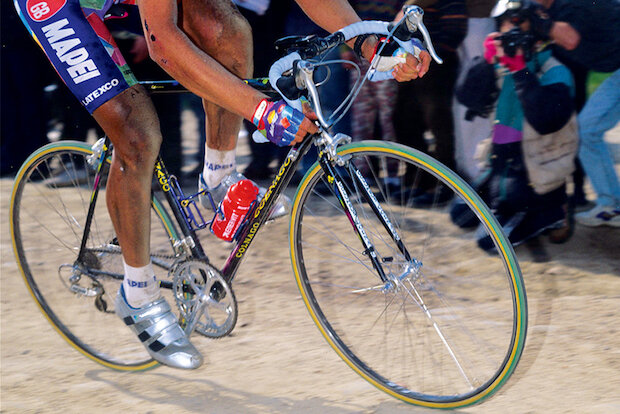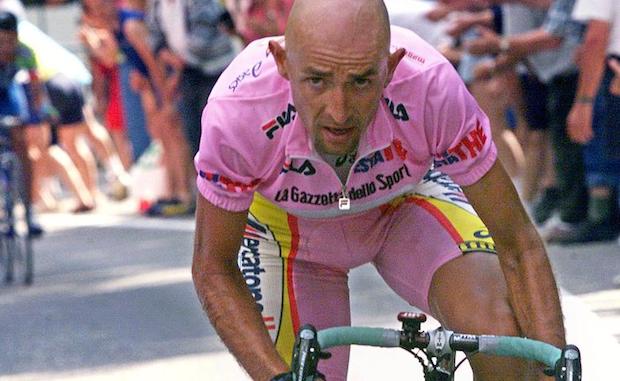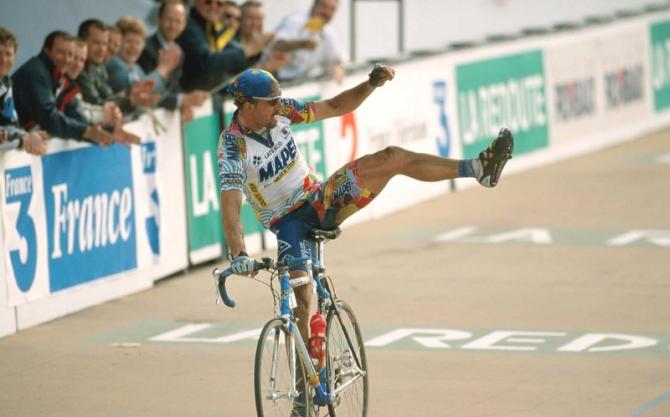Even though it’s seen many changes over the years, fundamentally the bicycle has remained the same; a frame and two wheels.
But since the inception of the safety bicycle in the late 19th Century there have been many modifications and advancements that combine make the modern machine that’s sitting in your garage.
Here are teen of the most important inventions in the history of the road bicycle, where they came from and why they matter.
The safety bicycle
Way back in the late 1800s, if you wanted a bicycle you owned a penny farthing. Even though you could move like stink on one of those – fit riders are reported to have been able to maintain speeds of up to 40km/h and the inertia of the huge front wheel helped with that – they were fundamentally rather dangerous.
So, to solve that problem, the safety bicycle was introduced. Using two wheels far closer in size meant that the rider’s feet were in reach of the ground, making both stopping and getting on or off far easier.
The original model by English engineer Henry J. Lawson used treadles to transfer power from the pedals to the wheel, but that was quickly replaced by the chain, the system that still powers the bicycle today.
While the penny farthing might have been what started the idea of bike racing, the safety bicycle certainly made it more accessible and practical for the masses.
Pneumatic tyre
The first tyres as we know them on bicycles were solid rubber bands around the edge of the penny farthing’s wheels.
But in 1887, John Boyd Dunlop made a set of pneumatic tyres for his son’s bike to help him with the headaches he’d been getting while riding. This turned into the Dunlop tyre company who then progressed to figuring out ways to prevent punctures such as adding a tough canvas layer to the rubber.
But none of these were detachable, and in 1891 Édouard Michelin developed a tyre that could be held onto the rim by clamps, and then detached in order to repair punctures.
From there came the glued on tubular, and that progressed into the clincher and inner tube combination that you’ll find on 99 per cent of bikes today.
Quick release skewer
The quick release (QR) was another invention pioneered by Tullio Campagnolo. As we mentioned previously, before the widespread popularisation of rear derailleur systems, changing gear required the rear wheel to be removed, turned around and replaced.
While racing, Campagnolo’s hands had become so cold that he struggled to remove the bolts that held the wheel in place in order to remove the wheel and lost valuable time in the race as a result. This frustration was the genesis for inventing the quick release skewer in 1927.
Obviously, this meant that the process of removing and replacing the wheel was greatly simplified, and the QR skewer was fundamental to Campagnolo’s Cambio Corsa derailleur system, where the tightening and loosening of the skewer played a part in moving the chain between sprockets.
Helmets
Love them or loathe them, helmets are an important invention in the history of cycling, if only for the amount of passionate debate they’ve caused.
Helmets first came to prominence in the 1970s with the ‘leather hairnet’ style, often in outrageous colours that looked a little, well, rubbish. But two companies –MSR and Bell Sports – started to look at importing the expanded polystyrene design used in motorcycle helmets to make something similar for the cyclists.
The Bell Biker (released in 1975) was one of the first to hit the shelves commercially but various issues and little poor ventilation meant that the helmet was still very much a work in progress.
The next significant innovation came in the early 1990s, with the development of the in-mould microshell. It was (and still is) a very thin outer shell that’s added as part of the moulding process, and it allowed for different shapes, and larger vents and it’s a design that’s still used on many helmets today.
Clipless pedals
Although the first ever clipless pedal was technically made in 1895 by Charles Hanson, it wasn’t until the 1970s, and the M71 made by Cino Cinelli, before it started to look anything like the pedals we ride today.
But the M71 still required the rider to reach down and unlock them using a lever, so in 1984, LOOK decided to use a similar binding system to that used in downhill skiing.
In 1985, Bernard Hinault won the Tour de France riding LOOK’s clipless pedals and it became clear that it was an idea that was going to stick around. Remarkably, the LOOK design ridden by Hinault is very similar to that which the French company still use today.
Although there are other designs available from companies like Time or Speedplay, the same principle in which the rider presses down to engage the cleat, then rotates the heel outwards to release, is pretty much universal among road pedals to this day.
Carbon fibre
In 1999, Lance Armstrong rode the Tour de France on Trek’s OCLV Carbon. It was the first carbon bike to win the Tour (we know, we know) and really signalled the turning point where carbon had totally taken over as the material of choice for bike frames.
The lightness, strength and ability to mould to incredible shapes without sacrificing either of the previous two meant that carbon fibre killed off metal bikes at the pro level at least.
These days, if you’re looking at a top level bike, chances are that the vast majority of it is made out of carbon. Frameset, rims, cranks, derailleur cages, bars, stem, seatpost, saddle rails, pretty much everything you’ll find on a bike can and has been made from carbon fibre. While steel and alloy still definitely have their place, the upper end definitely has a composite tint to it now.
Electronic shifting
While electronic shifting isn’t limited to Shimano’s Di2 system, it was the Japanese company that first brought a successful electronic groupset to market back in 2009.
There had been previous unsuccessful attempts to produce an electronic groupset back as far as the early 1990s with SunTour’s BEAST an Mavic’s Zap, but none caught on due to various and multiple issues that made them difficult to use. Although it is worth noting that Chris Boardman won the 1997 Tour prologue using a version of Mavic’s Zap system.
But Di2 changed the game. It worked seamlessly, making shifting powerful, accurate and crisp and taking shifting to a level that hadn’t previously been achieved by manual, cable-based systems. While some might argue that electronic shifting isn’t absolutely vital, there’s no doubting that the inception of Di2 was a serious innovation.















Greg Lemond used a TVT carbon frame (lugged) as farback as 1990.
What about index shifting and STI?